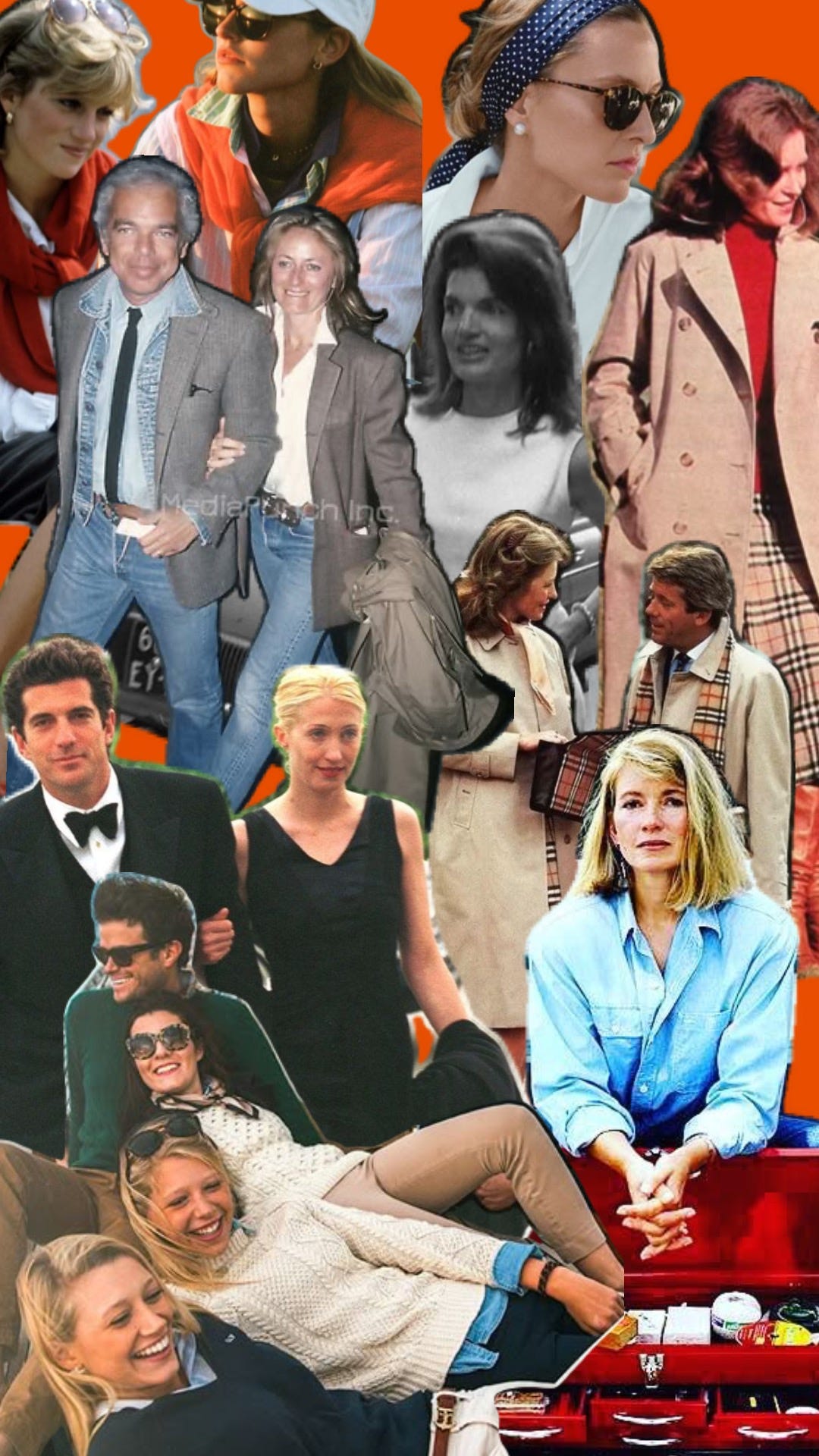The Myth and Reality of “Timeless”
Taste is always influenced by the broader culture. Personal style is how one relates to said culture.
This piece is cross posted with Tipper Goldkamp Design, my art and design Substack.
As somebody who reads too many think pieces by over-educated women, I’ve read a number of pieces recently working to debunk the myth of timelessness.
“Timeless”, it’s now said, is an impossible ideal peddled by elite tastemakers in a bid to justify Loro Piana neutrals; a way to shame the masses for falling victim to mall store trends.
And, to a degree, these pieces aren’t wrong: Taste never occurs in a vacuum.
Part of what makes something look right or wrong is the broader context—to get down to the most banal of examples, “the teapot pose”.
In 2010, the Basic Bitch Counsel decreed was that this pose was slimming and flattering for women.
A given woman could be aware of this or not, and she could act upon the knowledge as she saw fit, but anyone who was a 13-23 year old female and had a normal involvement with mass culture during this time period was going to be aware of the teapot.
The teapot was omnipresent.
Acceptance or rejection was inherently based on an acceptance or rejection of a broader aesthetic; the teapot the domain of women who enjoy Pumpkin Spice Lattes. Doing the teapot meant “Yes, I DO want to look thin, popular, and conventionally attractive!”
Now, the teapot looks dated.
It’s not how the current crop of 13-23 year old popular girls pose.
It’s a relic of the Obama years; a millennial time capsule filled with chevron and skinny jeans.
Acceptance or rejection now is an acceptance or rejection of that time capsule; an acceptance or rejection of the idea that popular wisdom circa 2010 is worth holding onto.*

And yet, for this very reason, acceptance or rejection of the teapot has always been an acceptance or rejection of something.
The meaning has shifted over time, but it’s still an acceptance or rejection of the mass culture, circa 2010.
And this is where the latest crop of think pieces lose any internal locus of control.
…
Personal style is inherently shaped by the environment—go to from the banal to the practical, Canada Goose parkas will always be a comparably tough sell for Miami shoppers—but personal style isn’t dictated by the environment.
Canada Goose still does more than $0 of revenue in Florida.
Personal style is about knowing one’s tastes and preferences, and approaching the environment with said knowledge.
A person doesn’t control which trends will come into vogue during a given season, but she does control which trends she’ll personally embrace or reject.
She decides how she interacts with the mass culture, and which exactly corners of the mass culture to interact with.
…
Crucially, this means that some people are going to look trendier than others.
Framed free of any value or style judgement, people have differing desires for novelty.
Some naturally gravitate towards bright colors, while others gravitate towards muted tones. There are born minimalists, born maximalists, and 1,000 shades in between. Some people fear nothing more than accidentally showing up in the same outfit as a coworker, while others take that as a sign of a good cultural fit.
Because of this, if 15 people are all given $500 to put together an outfit for a given occasion, the end result will be 15 different outfits.
Everybody can have the same budget.
Everybody can shop at the same stores.
Everybody can be working from the same basic starting point of “This is an outfit for brunch with friends” or “This is an outfit for a professional job interview”, and all 15 outfits will still be appreciably different.
Even if all 15 people are identical from a demographic standpoint—all 15 are of the same age, sex, and drawing from the same cultural references—there will still be 15 different people in 15 different outfits. And this is the reality such think pieces leave out.
The reality is that even in a room of 15 Vogue summer interns, there will still be 15 different responses to the present; 15 different interpretations of the fashion and cultural zeitgeist.
So does “timelessness” exist? Does personal style exist? Or is it all a myth pushed by some invisible fashion elite to make the normies feel inadequate?
No. Yes. Maybe. Kind of.
Timelessness is a myth, but certain principles endure.

There are exceptions to every rule, but vertical lines elongate while horizontal lines break things up. Black is more slimming than neon. Natural fibers wear differently than synthetic, and fabric weight impacts how an item will lay.
Different colors or hemlines will fall in or out of style, but navy is always going to be more conservative than chartreuse.
A-lines are going to remain more broadly flattering than shiny purple bodycon.
“Timelessness” is about recognizing these fundamental realities, and incorporating them properly. It’s about understanding why certain cuts accentuate or hide different areas, and how contrast impacts a look. Timeless understands that market forces are real, and that black holds a broader universal appeal than turquoise and coral chevron.
No look is ever completely divorced from time, but the “timeless” one is the one that ages gracefully.
…
Personal style, meanwhile, is about knowing what’s “timeless” versus a passing fad, and then knowing oneself well enough decide whether that matters—whether the novelty and camaraderie of being part of the cultural moment will outweigh the embarrassment of looking like a part of that cultural moment twenty years on.
If “timeless” is knowing that the basic concept of a white button down isn’t going anywhere, personal style is knowing that one likes heavy jewelry and rainbow sequins regardless of the trend cycle, and that spending $20 to chase a fad every now and then is exactly the kind of kind of thing that makes life worth living.
*In the interest of full disclosure, I was always wary of skinny jeans, but the youths will have to pry my side part from my cold dead scalp. I remain agnostic regarding The Teapot.






